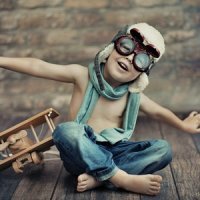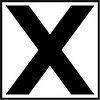-
Posts
24 -
Joined
-
Last visited
-
Days Won
1
Ferguson last won the day on December 6 2023
Ferguson had the most liked content!
About Ferguson
- Birthday 03/05/1980
Profile Information
-
Gender
Male
-
Location
Minsk, Belarus
Recent Profile Visitors
463 profile views
Ferguson's Achievements

Newbie (1/9)
525
Reputation
-
Ferguson started following Macchi MC.202 "Folgore" (Hasegawa 1/72) , BMW 801 Radial Engine (Eduard 1/32) , Hawker Hurricane Mk.IIC (Arma Hobby 1/72) and 5 others
-
Greetings. I'm not sure I chose the right forum section, but the topic in general is aviation. I am not indifferent to radial piston aircraft engines, and although my favorite scale is 1/72, I wanted to have the engine in a larger size, well detailed, and this is exactly what the work in question is about. Resin engine from Eduard, designed for Revell's 1/32 scale Fw-190. Quite worthy to be a separate model. The quality of the set is 4+; if you make it a separate model, you would like to improve some aspects. The etched spark plug wires had to be completely replaced with wire, and at the same time the distribution ring-ramp had to be redone. Pushers made of metal tubes, and much more. But for the most part the kit is excellent, the resin just needs cleaning up in a lot of places. Metallic paint by Tamiya LP and Alclad, Mr.Color, hand painted mostly by Vallejo. *Sorry for the automatic translation
-

Hawker Hurricane Mk.IIC (Arma Hobby 1/72)
Ferguson posted a topic in Ready for Inspection - Aircraft
I welcome everyone with another craft - Hurricane Mk.2C from Hawker. Arma Hobby set in the Expert Set version. If not for a couple of shortcomings, it could be called a recreational set. Perhaps the most unpleasant thing about the set is the canopy; its thickness is very unpleasant even for the closed position. In the open position, again due to the thickness of the canopy, the manufacturer made a cut on the gargrot so that this very canopy could be seated. Therefore, we had to adapt the vacuum canopy from Rob Taurus, remove the selection on the gargrot, and simultaneously develop its complex shape. In addition to the canopy, additional elements were installed with resin exhaust pipes from Quickboost and brass machine gun barrels from Master. To the best of our ability, the design of the landing lights was refined - the ones in the kit are a bit rough, the rear pillar is also made in a rough way, some rods were added - on the keel, in the radiator scoops, and other little things. In general, the Arma kit is one of the best that I have ever owned, there is a lot of external detailing, impressively done, but it required more care, especially when riveting the model. Prototype - pilot Michael Rook, Algeria, December 1942. Enjoy watching, and I apologize for the automatic translation.- 5 replies
-
- 36
-

-

-
- Hurricane
- Arma Hobby
-
(and 1 more)
Tagged with:
-
Greetings, fellow modellers. The kit from Takom is based on a V-2 ballistic missile (aka Aggregat 4) with a Meillerwagen transport trailer and a Hanomag SS100 tractor. For the vignette, a kit from Hasegawa is used - guard buildings, pretty much hand-finished. A separate topic is a machine gun on a tower, with friends it was decided that a tower without an Mg-34 is not a tower at all, so the Mg-34 was molded from Zvezda plastic and an Aber barrel. The rest is scratchbuild. Out of habit as an “aircraft modeller,” I riveted the rocket. I limited myself (of the more noticeable ones) to replacing hydraulic rods, ladder steps, and imitation cable fencing. The rest is free creativity
- 14 replies
-
- 39
-

-
Thank you very much everyone for your feedback. For painting the F6F-5 the base colors were Mr.Color C365 and C316. When painting the Mk.1, choosing a base color was more difficult. For lower surfaces this is Mr.Hobby H74 Sky. For the top ones I used my own mix: 1) H333 + white (~30%); 2) H74 Sky + H52 Olive drab (ratio ~1/3). Next, the goal was to simulate burnout of the upper surfaces and contamination of the lower ones. Something like the photo below: For this, the main technique was the salt technique. The description can be read on the first link you come across: LINK
-
very flattering comment, thank you and thanks to everyone for the reviews
-
Well done
-
I welcome everyone with my next crafts - F6F-5 and F6F-3 (aka Hellcat Mk.1) from Grumman. Eduard's set has been known for a long time, so I tried to collect all the more or less significant additions/alterations in the photo, so as not to write a lot of boring text. Perhaps the most unpleasant thing about the kit is the need to rework the landing gear niches and rear pillar, correct the joints of the steering elements (given as jointing), and reduce the thickness of the canopy. The rest of the improvements are standard. At the same time, I assembled two models from the Double Kit - the F6F-5 and the British Hellcat Mk.1 (aka F6F-3), so many of the operations are identical. Decals for the F6F-5 are from Techmod, for the Hellcat Mk.1 - standard ones from the kit. The identification marks are mostly painted. Two words about stands: – For the F6F-5, a mock-up of a hangar catapult was made, the kind that were used at one time on American aircraft carriers. I made it myself, mainly from polystyrene. The manufacturing process is also shown in the attached photographs. - For the Hellcat Mk.1, the base from the Eureka XXL was taken as a basis; all that remained was to paint it. Sorry for the automatic translation, enjoy watching.
- 23 replies
-
- 53
-

-

-

P-51B Mustang (Academy 1/72)
Ferguson replied to Ferguson's topic in Ready for Inspection - Aircraft
There is at least one . Looking again at the photo of the original, I decided that I had used the antenna from the kit in vain. I replaced the antenna and made a stand. Thanks for your feedback -
Greetings to all. The Hasegawa model is of venerable age, with perhaps its typical pros and cons: very poor detailing, but excellent execution of the panel lines, perfect joining, razor-thin edges. Some technological aspects of the assembly are of course also outdated (hello from the 90s), but all this did not disappoint at all, the model is pleasant and, in my opinion, is definitely the best for the 520. I didn’t photograph all the improvements in the process, and there weren’t that many of them, so I collected what was left in the photo into collages. The cockpit in the model is completely empty. I had a small etching board from Eduard, it is the same age as the model, so it also has a lot of shortcomings, but it helps out quite well in combination with available materials. Another relatively significant omission on the model is the landing gear niches (I see that these are also “family features” of Hasegawa models). Firstly, they have an irregular shape in cross-section (in the part where the stand is placed they are rectangular in cross-section), and secondly, the filling of the niches themselves is fictitious. Here, too, it was corrected partly by etching, partly by polystyrene. The rest of the modifications are already in the category of small things: tubes, hoses, technological holes, thinning of the edges, navigation lights made of colored plastic, etc. The tail unit has been “revitalized” a little - in photographs of the D.520 the rudders are often in this position. In addition to the mentioned etching, I used exhaust pipes from Quickboost, a vacuum canopy, a landing light from Elf, wheels from Kora (very low quality, I do not recommend). Riveted. Perhaps it was unnecessary, but I decided so. Painted with Tamiya acrylic and Hobby color. I mixed all the colors myself. Color accuracy is an extremely complex and hardly provable issue. Decals from Print scale. The unit of the pilot Rene Pomier-Layrargues, famous for the fact that he managed to shoot down Werner Melders, although the French pilot died in that battle, but Melders survived and continued his “career”. I painted the tricolor on the keel. Unfortunately, this time too there were some shortcomings, but overall I was pleased with the result, which is what I wish for all modellers. *Sorry for automatic translation
- 11 replies
-
- 35
-

-
Thank u Mike 👍
-

Macchi MC.202 "Folgore" (Hasegawa 1/72)
Ferguson replied to Ferguson's topic in Ready for Inspection - Aircraft
Sorry for my english, but thanks a lot, man ;) -
Greetings to all. The Hasegawa model is of venerable age, poor in detail but at the same time with excellent panel lines, precision joining, thin edges. Therefore, in a sense, it is great for those who want to work with their hands and apply dexterity. At the same time, the prototype itself is very rich in details. Therefore, during the construction, a lot of aftermarket goods and even more parts made from scratch were used, most of which I think can be seen in the photo. The prototype is Captain Franco Lucchini's unit, a well-known aircraft among modellers, primarily because of its unusual paint scheme, which caught my attention. The plane was reconstructed at least twice, both times changing its appearance, and ultimately received half a wing and a hood from other aircraft. *Sorry for the automatic translation
- 26 replies
-
- 60
-

-

-

P-51B Mustang (Academy 1/72)
Ferguson replied to Ferguson's topic in Ready for Inspection - Aircraft
Thank you. After the release of the Arma Hobby set, the Academy set of course finally lost its relevance





